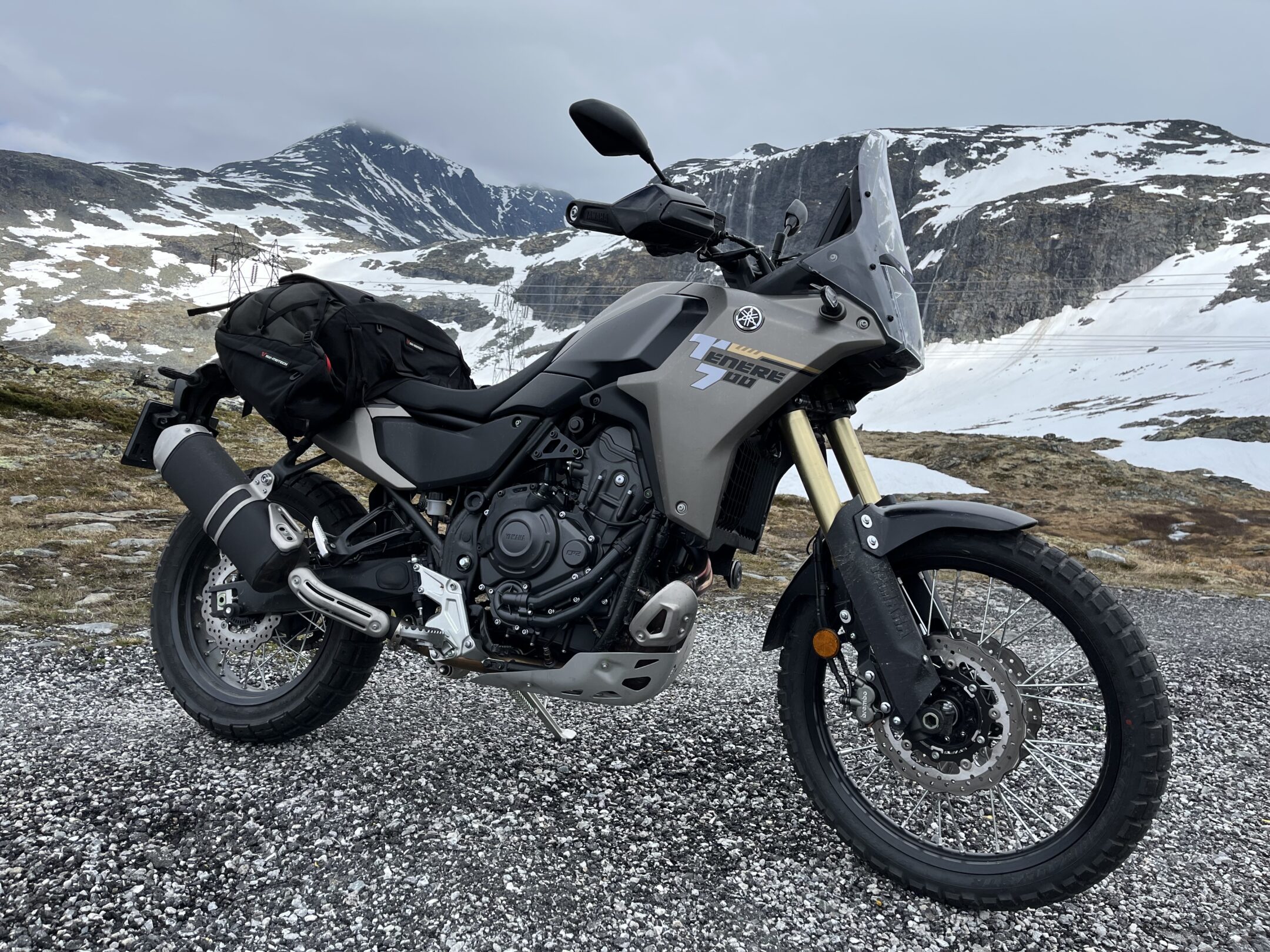Text/photo: OAI
The changes may not be that big, but they are significant and definitely contribute to the new tenere 700 being a better motorcycle. How much better, well that’s probably partly dependent on your preferences and what you define as a good motorcycle, but the changes are objectively many and large enough that it’s easy to say that it’s now more complete, better and more fun.
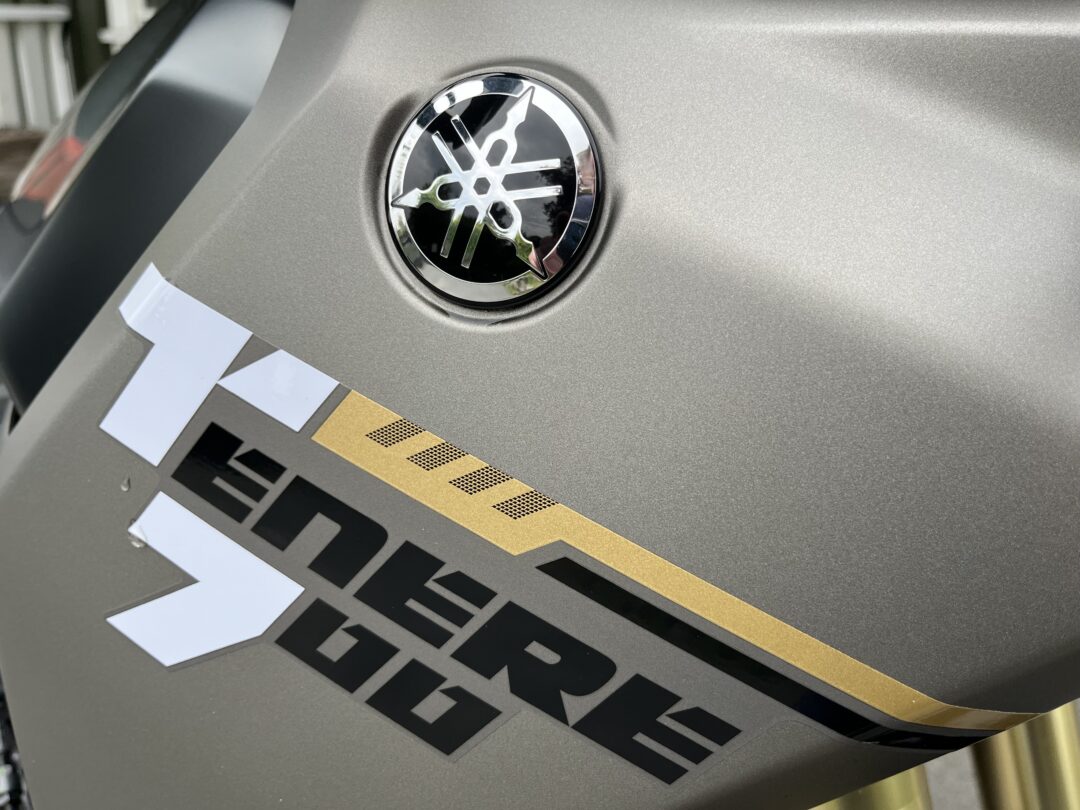
I’ve now been riding the Yamaha Tenere 700 Low for 14 days in a wide variety of conditions that have tested both rider and motorcycle. I’ve ridden on asphalt, gravel, off-road, along fjords and in the mountains, in the sun, heavy rain and in strong winds and temperatures as low as 6-7 degrees – exactly how a T7 should be used and even though this was “damn” sour at times, I’m really impressed with the upgrades that I think make the 2025 model significantly better than its predecessor. I’ve owned two T7s myself and know the model quite well and the last of these two bikes was lowered with new and longer link arms and a seat kit that reduced the seat height by a total of 4 cm. I could easily change the low seat depending on what I needed. Of all the bikes I’ve owned, the T7 is definitely the model I’ve gotten the most under my skin and perhaps the best feeling of mastery with. Therefore, I had quite high expectations for the 2025 model, which was even lowered from the factory.
Technical data:
| Engine | 2 cylinders in line, CP 2, 4 stroke, 4 valves |
| Engine displacement | 689 cc |
| HK | 73 |
| Nm | 68 |
| Cooling | Liquid-cooled |
| Front dampers | 43 mm, adjustable, KYB, 210 mm travel |
| Rear silencer | Monoshock, adjustable (remote) 180 mm travel (low) |
| Front brakes | Brembo 282 mm, 2p |
| Rear brakes | Brembo, 245 mm, 1p, |
| Front tires | 90/90 R21, Pirelli Scorpion Rally STR |
| Rear tires | 150/70 R18 Pirelli Scorpion Rally STR |
| Wheelbase | 1595 mm |
| Seat height | 860 mm |
| Ground clearance | 240 mm |
| Wet weight | 208 kg |
| Tank capacity | 16 liters |
The Yamaha Tenere 700, commonly referred to as the T7, is a very capable adventure bike that is used by everyone for absolutely everything. Pedestrians ride on asphalt and gravel and specialists run wild and unrestrained with this particular model, which few other brands have managed to challenge to any great extent. The T7 owns the off-road throne among specialists because it has a wide range of capacities and qualities as an all-rounder, and because it satisfies virtually everyone’s needs without major upgrades. When it arrived in 2019, it cost just over 130,000 SEK and was both affordable and, not least, a very capable entry-level model for the adventure segment. The T7’s capabilities were so good that specialists quickly fell in love with the model, which could be made even better and more powerful with relatively simple steps, especially on the damper side. Since then, Yamaha has developed the T7 portfolio and as of today, the manufacturer offers as many as 7 different versions of the model in slightly different formats. So it’s definitely possible to find a model that suits your own preferences and needs. The T7 Low, which is a welcome new addition to the T7 family, is good news because both short and long riders seem to like the model so far. Incidentally, the T7 must be one of the best-priced models on the market – a 2019 T7 still costs over NOK 100,000, depending of course on condition and mileage, but the resale value is still very good.
New design

The T7 model launched in 2019 undoubtedly struck a chord with people, it was slim, upright, slightly different and very sleek. The design of the 2025 model has not changed significantly and you need to know the model well to see what Yamaha has actually changed now. The main changes are a new and slimmer seat and a new tank that will provide better anchoring for the legs while riding. The 2025 model also has new and slightly more robust hand-guards that are of better quality than those used on previous models.
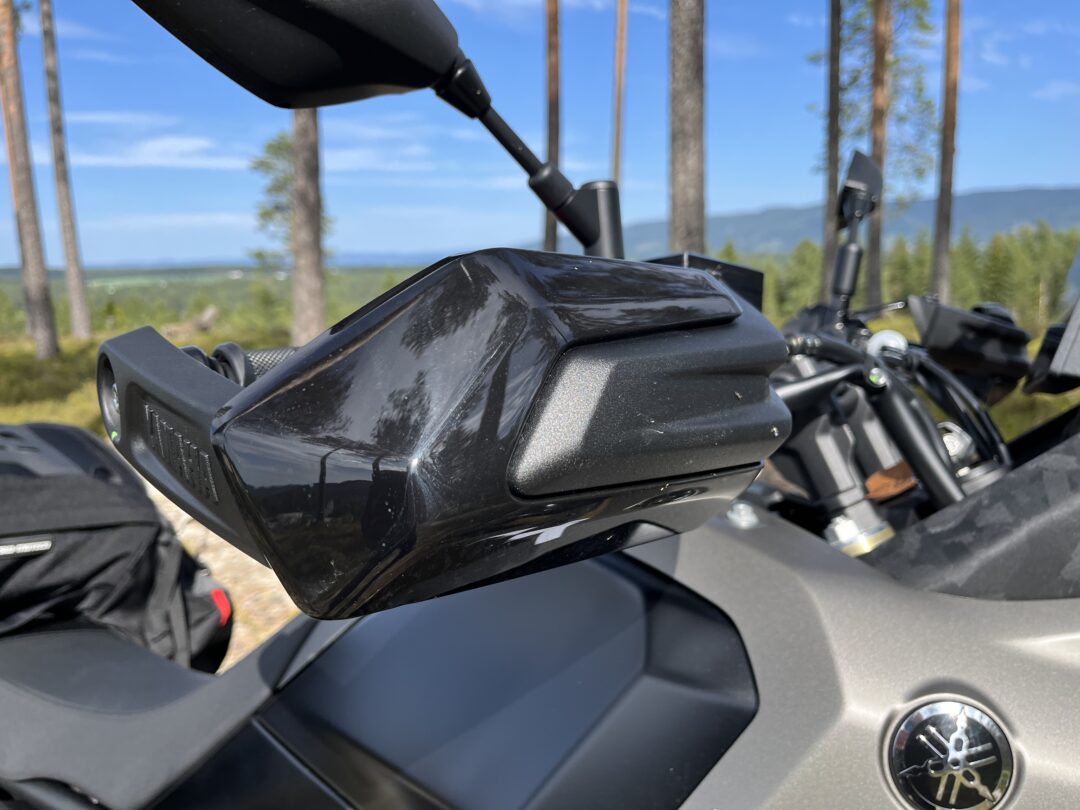
Otherwise, the T7 is as tall and slim as ever, designed with a relatively high center of gravity and a tall frame that leaves room for long-legged shock absorbers with a travel of 210 mm. The handlebar crown sits high and, with the handlebar as a link, provides unusually good contact with the 21-inch front wheel which, of course, also creates good stability and handles bumps very well. The model is also slender and these elements add up to a slightly unusual steering geometry precision that we don’t find on many other brands in this segment. It’s not hard to see that the T7 is one of the very best in this segment. However, we are now seeing that some of the Chinese brands are now coming up with similar features on their models and it surprises no one who knows what Yamaha has managed to produce in terms of handling with the T7. The functional part of the design is an essential part of the T7’s success and works very well in most situations and regardless of skill level.
What’s new on this model?
Yamaha itself lists the points below as new technical highlights, some of which I consider to be points of improvement, others are of a different and perhaps more important nature.
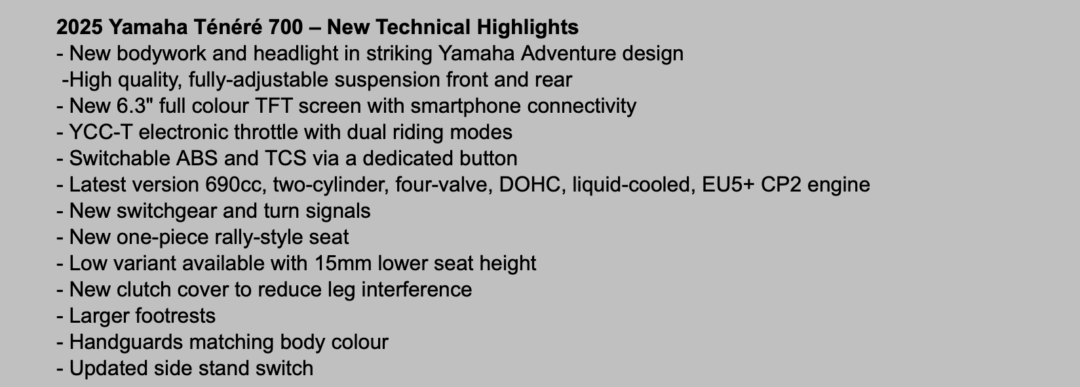
For myself, and with reference to my own preferences, I feel that the following changes are the most important:
- New, better and adjustable dampers
- New 6.3″ instrument and control switches
- YCC-T electronic trolley with two riding modes
- Possibilities to turn off ABS and TC with separate button
- Factory-linked version – low
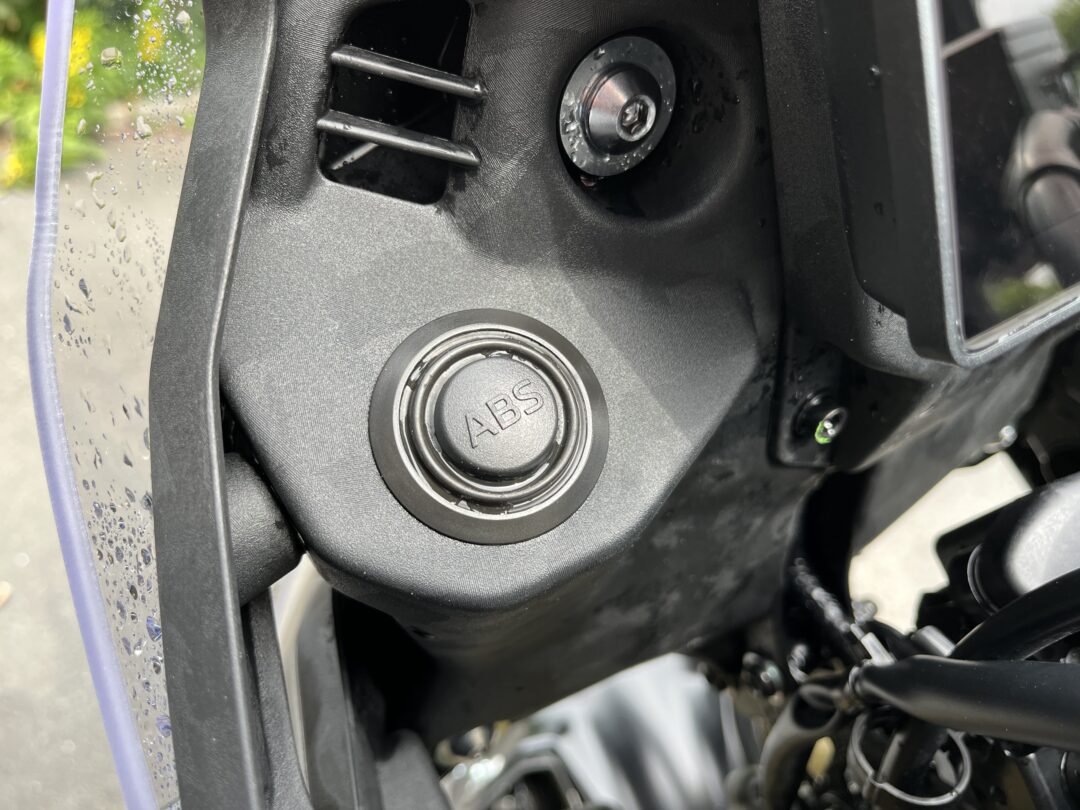
The ability to disengage ABS and traction is of course no great novelty in itself, but many would say that it is necessary when operating on gravel or off the beaten track. It’s a bit inconvenient that you can’t operate this function while riding, you actually have to stop, put the bike in neutral and then disengage. I understand that this is designed for safety reasons (as a fail-safe function) but this logic is not consistent with other functions that you can actually use while driving (such as general navigation around the instrument) and then it seems a little counterproductive and becomes a little annoying, but go ahead, not the end of the world exactly and there are more and more of such fail-safe functions on all brands these days. Distractions are not good in any context when riding a motorcycle and Yamaha must of course keep up with this development.
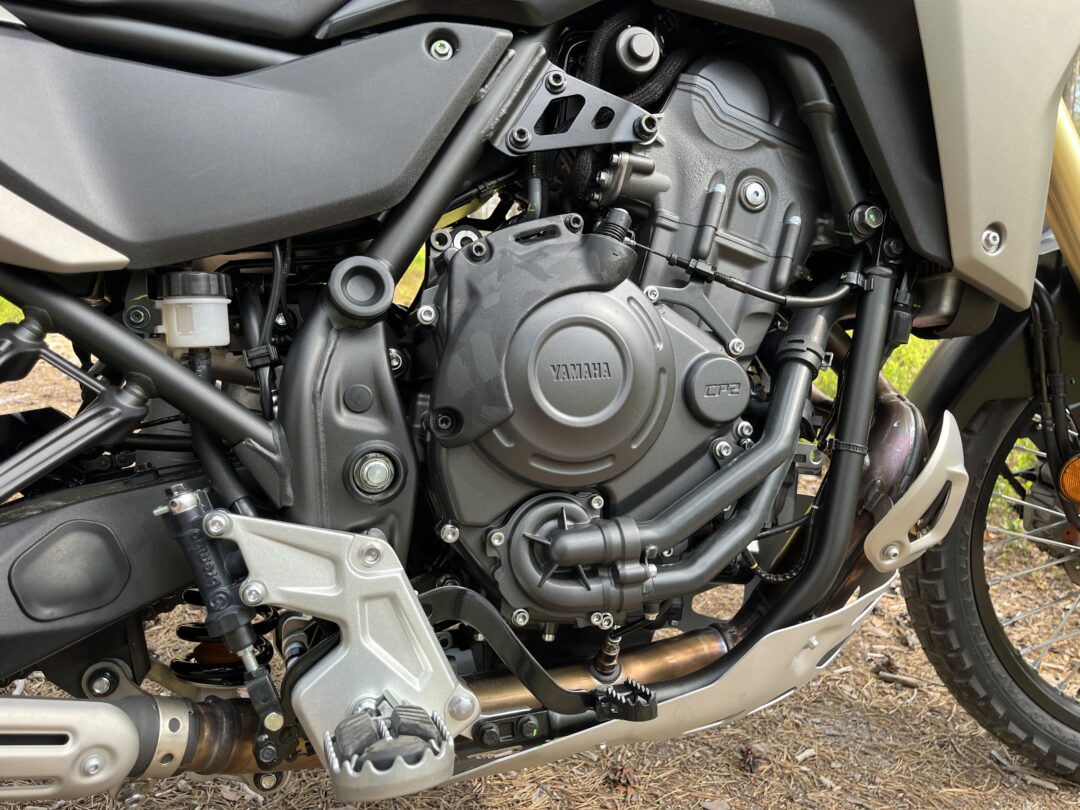
The YSS-T technology comes with two new mapping options. The PWR-1 Sport and PWR-2 Explore options make it possible to extract a larger and, not least, demand-oriented power range from the hard-working CP3 engine, and for me this is perhaps the biggest and most exciting difference between this and previous models. In the PWR-2 Explore, I experience the power output as similar to the previous models, while in the PWR-1 Sport you get a completely different, much faster and a significantly festive throttle response that makes me feel like I’m driving with a much more powerful engine. At least on the way through the mid-range before it flattens out a little at the top. But that’s okay, it’s usually not in this part of the power register that I want things to really take off on an adventure bike. This machine delivers more than enough powder for most people, as you know, it’s always the rider that counts and I’m still, as I was in 2019, as impressed as ever with how much powder the 74 hp, 68 Nm CP2 motor actually delivers.

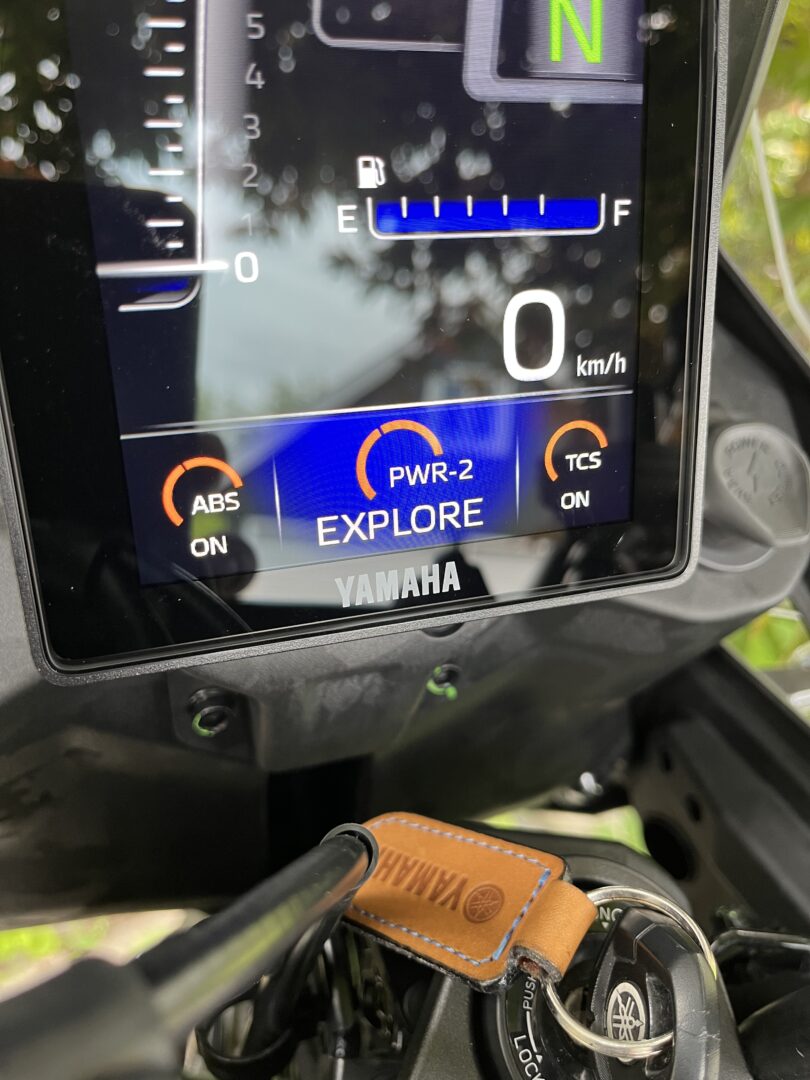
The new silencer setup delivers more than enough for everyone

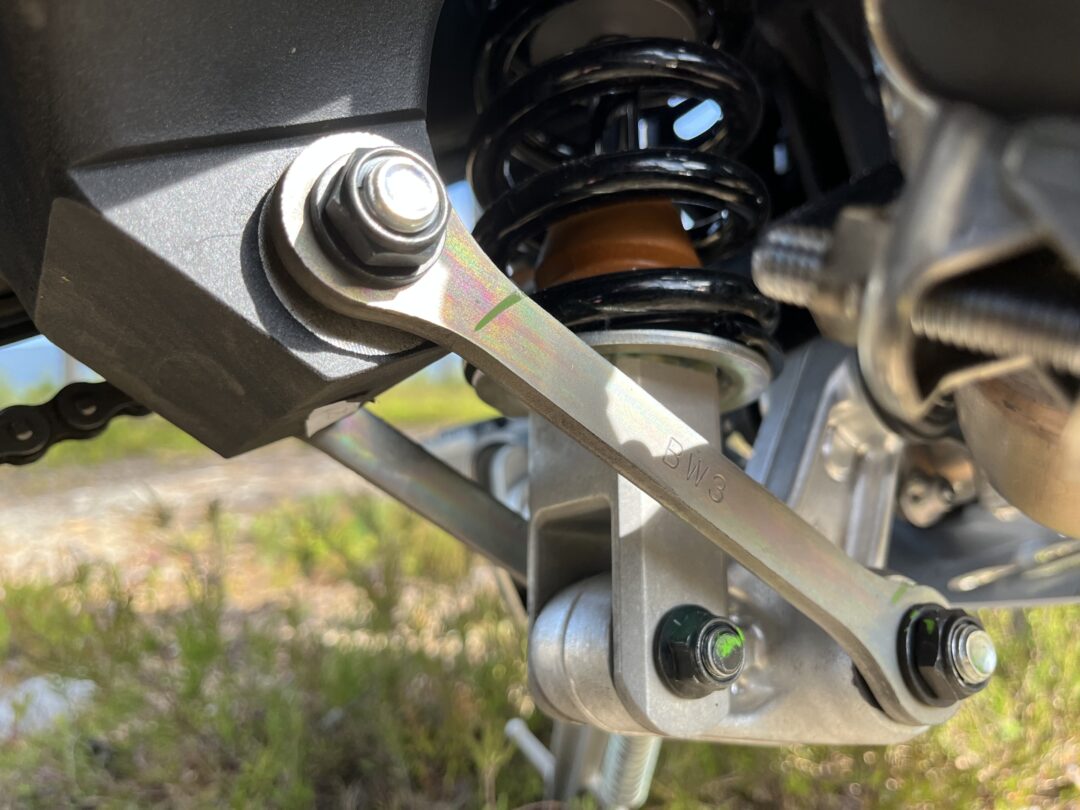
As I’ve made clear, I consider myself to be a normal gravel driver, I’m not a specialist, but I’m involved in most things and enjoy the gravel environment primarily because it gives me access to new areas and experiences that I really appreciate. With that as an important premise, I can report that the new shocks, frame and swingarm are more than enough for me and my needs, even with about 10-15 kg of additional weight in the form of luggage and riding gear. With luggage, riding gear and my own weight of 88 kg, I weigh just over 100 kg in total. During the test, we drove a lot on gravel, on tractor roads and a little off-road and I have to say that my skills were limited long before the T7 was, so I personally have no complaints about the dampers, which are also adjustable. However, I feel that this setup is significantly better than on the previous models, especially the rear shock that many chose to change on previous models. That’s no longer necessary, at least not for everyone.
I find the bike firm, decisive and nice, not too soft and not too hard, it handles every surface and bump that comes my way and I don’t have to think about anything other than choosing good and sensible tracks with the right power output. The T7én makes it very easy for me to concentrate on my own contributions in terms of skills and in no way limits me. We operated in mountainsides and side valleys of the Sognefjord, in heavy rain and sun, so some of this was actually a bit demanding in terms of skill. But. The T7 was never the limitation and I was very clear that I was driving the Low version.

The bike literally eats up poor surfaces and even with a little flow and good speed you don’t have to think about anything, the front wheels and damping (frame, swingarms and dampers) absorb all the forces in an outstanding way and help me stay calm everywhere. In pwr-1 – sport, the bike is simply rocking and sporty and can keep up with almost anything as long as the rider has the skills to do so.
What do these changes do to the whole?
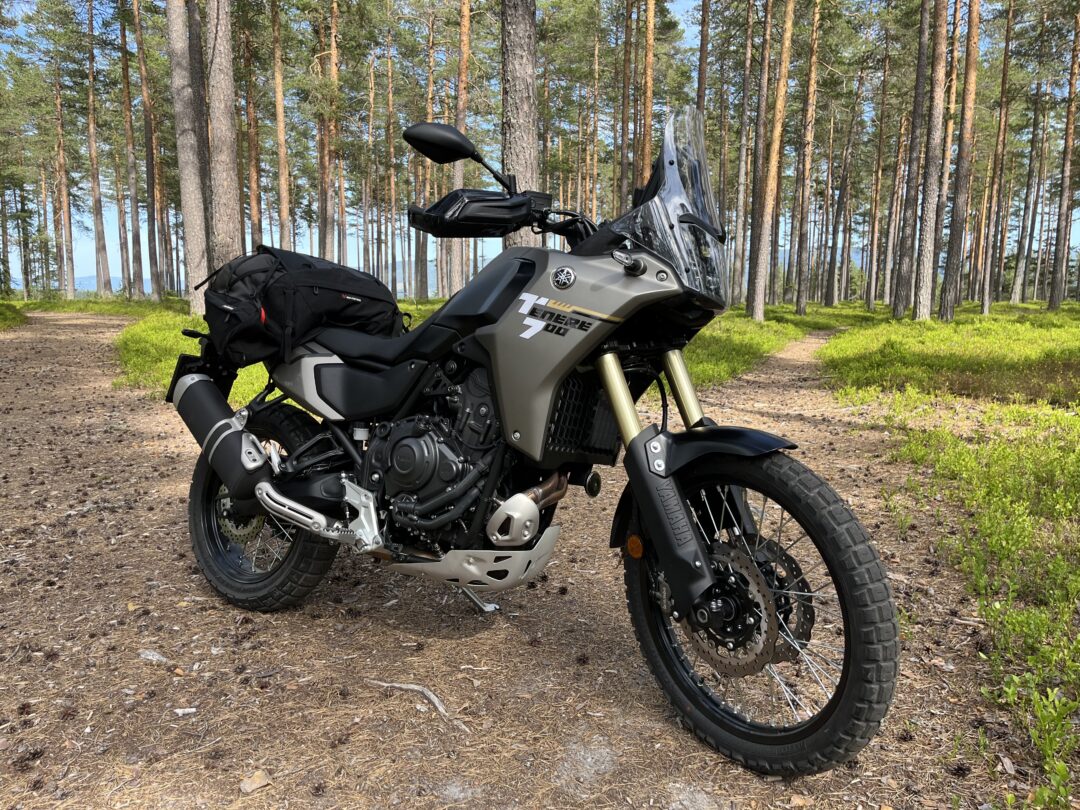
Although these changes are in no way ground-breaking in terms of the use of technology or technology development, these changes mean quite a lot and perhaps the most important thing is that Yamaha manages to stay true to the T7’s original DNA and thus does not lose its foothold. They say that simplicity is often the best and this has been and still is the “sweet spot” of the Tenere 700 and none of these changes change that. The T7 is still a simple, capable and fantastic adventure bike, but it has become even better and even more capable. The upgrades that have been made make the T7 a steering geometry stroke of genius and a bike that can be used for absolutely everything. The changes mean that the T7 still holds the throne as one of the world’s best adventure bikes in this class and it will be a challenge, if possible, to topple it from this throne.
The changes that come with the 2025 model weed out any previous weaknesses or quirks that previously required adjustment on everyone’s part, which is no longer the case. The changes give you access to a steering geometry power bomb with a very high level of comfort and an almost extreme “fun factor”. Everything has gotten a little better and in total this makes a contribution I would consider a significant difference. The effect of the factory-supplied Low version comes on top of this and is another positive contribution that makes it possible for many many more people to drive the T7, it is perhaps one of the biggest contributions because that is what we wish for as many people as possible.
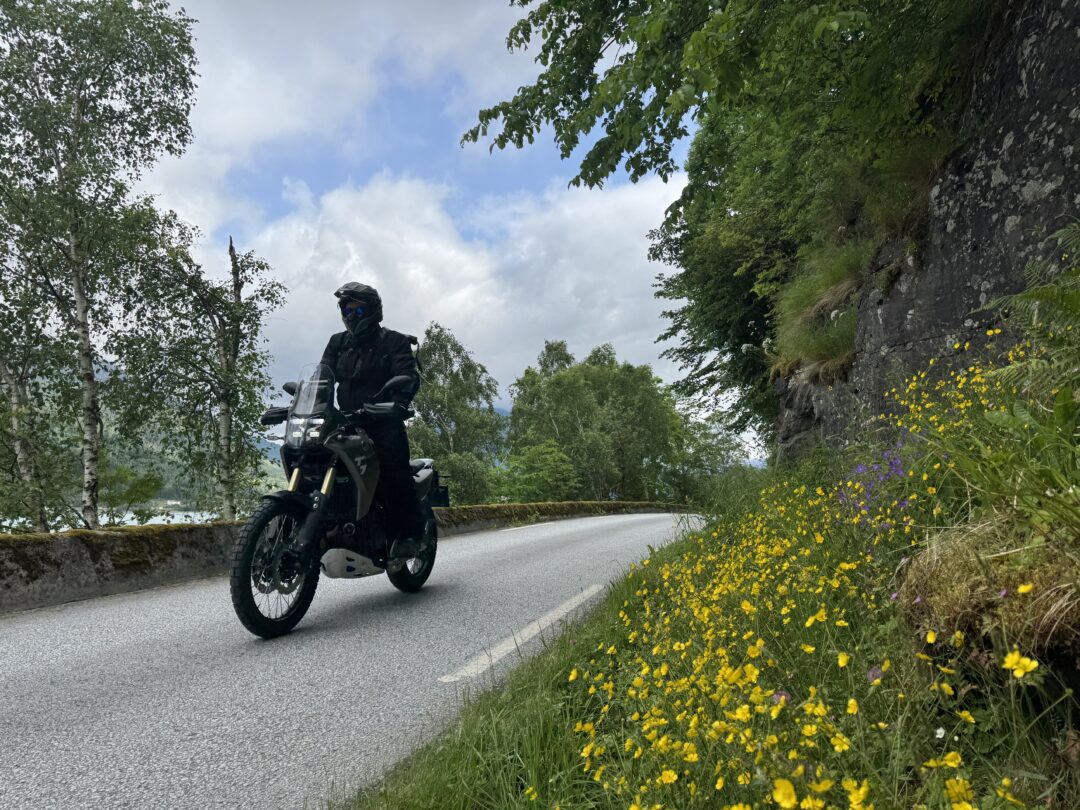
Since its launch in 2019, the T7 has become around 40,000 kroner more expensive, which is quite a lot considering that not much has happened to the model in recent years. But let’s not forget that the competitors have had a similar price increase and if we add the effect of the latest upgrades to this model, it’s definitely worth its weight in gold. I have no problem maintaining the price of about 169,000 given the current capacities. Regardless of segment and class, I personally believe that this is one of the world’s best motorcycles and that’s saying something.
But it must have some weaknesses – where are they?
Sure, it probably has, but don’t forget that developing, producing and selling a series-produced motorcycle is all about making compromises. And of course, compromises have been made to make it possible to make money on this particular project, but with such extensive experience and expertise as Yamaha possesses, the effect of the compromises made is much smaller and therefore there is not much to put your finger on in this particular case. The specialist will, of course, see it differently, but this group knows what they want and they can carry out the necessary upgrades to get what they want, so we can ignore them, they’ll manage anyway.

I have almost nothing to put my finger on, but if I were to do something myself, it would have to be to buy new adjustable levers for brakes and clutch and possibly Pirelli Scorpion Trail tires that handle very well on roads and solid gravel, but worse on loose / wet surfaces with the need for better grip and lateral stability. But this goes under the category of customization and cannot be presented as weaknesses because it is not. But these are the only two things I would find it necessary to do something about.
If I were to fantasize or dream a little, it would have to be about a knuckle shifter or Y-AMT gearbox, that would be something.
In summary – simple but perfect
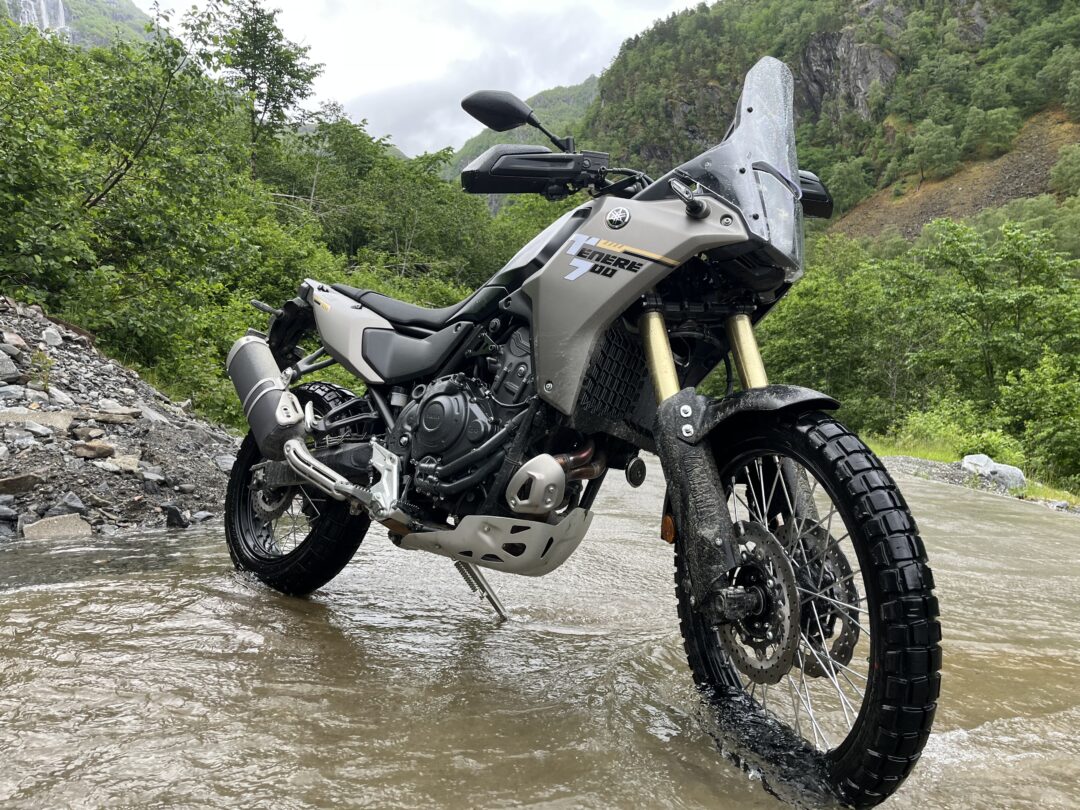
First and foremost, I’m glad that Yamaha hasn’t gone too far down the tech trail and moved away from its original DNA, namely simplicity. There is a high risk of ruining the model’s functions and driving pleasure with too much tech or driver support, which could take us away from the authenticity and what we really value about the T7 model. Fortunately, Yamaha has not done that. Here, simplicity is still the best and that’s exactly what we love about the T7. It’s simple but perfect and it produces an insane amount of riding pleasure in all environments and in all situations. The range of applications is insanely large and with the “Low” person that I’ve been riding now, even more people will have access to this fantastic motorcycle. That in itself is a significant change and not least very positive.
